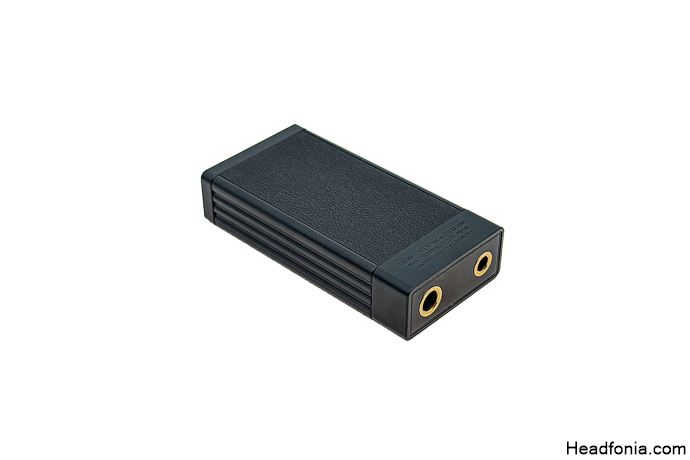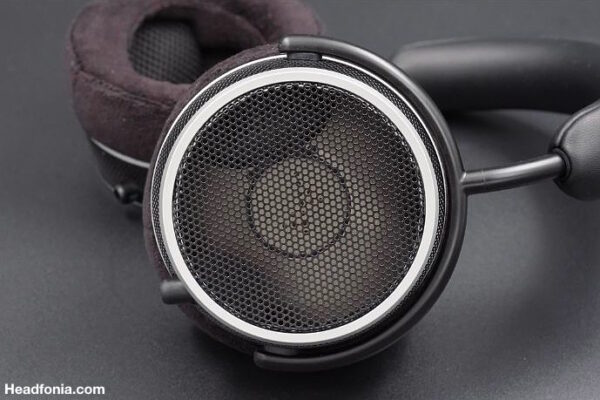If Google is showing you this page directly, click here to go to the start of the review
Features
The ONIX Alpha XI1 comes with physical buttons, customizable up to some extent with Eddict Player on Android. Offering flexibility in controlling various functions, including volume/DAC adjustment, track navigation, and access to a menu where you can change DAC filters, etc. The integrated 0.87-inch monochrome OLED display provides easy-to-read, clear text. The main round button right next to the screen is equipped with a status light that changes color according to the sample rate.
The volume control can be managed in multiple ways, either through the Alpha XI1’s own volume control, the dongle’s buttons, or directly from the source device, allowing users to fine-tune the volume to their preferences. 40/100 is my go-to, via my daily IEMs.
At the heart of the ONIX Alpha XI1 are dual Cirrus Logic CS43198 DAC chips paired with dual SGM8262 operational amplifiers. Together, they provide a robust output of 500mW into 32Ω through the 4.4mm balanced output and 180mW at 32Ω through both the balanced and single-ended 3.5mm outputs. The inclusion of five selectable digital filters also makes a subtle yet audible impact, allowing users to tweak the sound to match their preferences. My go-to is the fast ones, and those provide better clarity to my ears.
One standout feature of the Alpha XI1 is its ability to deliver substantial power output while maintaining an impressively low noise floor. This results in a pitch-black background, free from unwanted hiss or interference. 500mW is a lot of juice for a dongle, typically reserved for more expensive gear, and ONIX has managed to deliver it in a highly affordable package.

Sound Impressions
The ONIX Alpha XI1 delivers a sound signature that can best be described as slightly warm, with a natural and organic presentation. Its tuning is balanced with an emphasis on richness and musicality, which allows the Alpha XI1 to stand out from more analytical-sounding dongles in its price range such as the Aful SnowyNight.
The overall sound presentation is fairly detailed, too, with a focus on naturality across the frequency spectrum. One of the most impressive aspects of the Alpha XI1 is its ability to maintain excellent timbre, not too warm, not too clinical, and excellent tonality for this kind of USB DAC/AMP. Whether I was listening to complex metal tracks or acoustic performances with fewer instruments, the Alpha XI1 handled everything with ease, providing a dynamic and musical presentation. The Alpha XI1 is both powerful and subtle, and it is able to drive demanding headphones like the HarmonicDyne Zeus Elite.

Low
The bass response on the Alpha XI1 is punchy and deep, with good extension into the sub-bass regions without overpowering the other frequencies. It retains control even in bass-heavy tracks, with no signs of muddiness. The slightly warm tuning gives the low-end a bit of extra body, making it especially satisfying for genres like electronic and hip-hop. Thanks to excellent PRaT, when paired with capable IEMs, like the OD100, it even handles the metal genre. What I particularly enjoyed was that even in bass-heavy tracks, the instruments remained clean and well-separated, providing a solid foundation without interfering with vocal clarity or instrumental detail.
Mid
Mids are where the Alpha XI1 impresses even more, with a natural, fluid timbre that accurately reflects the nuances in vocals and instruments. Both male and female vocals have a realistic rendering, sitting comfortably in the mix without being pushed too far forward or recessed. Instruments like guitars, pianos, and strings are rendered with a rich timbre. Instruments have a realistic body, which is another highlight of the XI1, IMO. There’s a sense of realism, and the slight warmth that the Alpha possesses does not make it sacrifice detail, making the Alpha XI1 an especially versatile device for any genre.

High
The treble on the Alpha XI1 is smooth and extended, providing plenty of detail without ever crossing into harshness or sibilance. It offers just the right amount of sparkle to add air and clarity to the mix while still remaining easy on the ears during longer listening sessions. The upper mid/lower treble sounds extended and clean, yet never sharp. Cymbals, hi-hats, and other lower treble-dependent instruments are rendered with a crisp but controlled edge, ensuring they never dominate the sound signature or introduce shoutiness. Even with brighter recordings, the Alpha XI1 manages to keep everything balanced, providing a pleasant top-end that goes excellently with the rest of the frequency range.
Technical Capability
The ONIX Alpha XI1 excels in technical performance, offering a fairly wide and enveloping soundstage for a dongle in this price range. The soundstage is expansive enough to give a sense of great space and separation, creating an accurate holographic image of the stage. The instrument separation is especially excellent for the price. The Alpha XI1 allows each instrument to breathe, avoiding congestion even during complex passages.
The PRaT of the Alpha XI1 is excellent; it feels dynamic and engaging regardless of the genre. The transients are fast and agile, especially with impressive IEMs such as the 64 Audio Volür. This precision doesn’t come at the cost of musicality; despite the technical prowess, the Alpha XI1 retains Onix’s house sound, which is natural and organic in its essence.

vs. Shanling UA4 ($99 USD)
While both the ONIX Alpha XI1 and the Shanling UA4 share a similar layout and user interface, the Alpha XI1 offers a more refined and premium experience in terms of build and sound.
The UA4, despite having a very similar price tag, offers a less impressive overall performance and feel. The most noticeable difference lies in the SQ and the design. ONIX’s signature black-gold aesthetic, coupled with high-quality materials like leather accents and gold buttons and overall more premium components, gives the Alpha XI1 a more luxurious feel compared to the UA4’s more straight-to-business design. The UA4 is not inferior by any means when it comes to sheer build quality, but the design route the Onix took is just beautiful.
When it comes to sound quality, the Alpha XI1 feels more natural with a cleaner presentation and a more balanced end-to-end extension. It also provides better driving capability for demanding headphones. The sound signature of the Alpha XI1 feels more refined than the Shanling UA4. The Alpha XI1 also offers a darker, quieter background, especially with IEMs.
Though the UI and button layout are similar between the two, the Alpha XI1’s improvements in both design and sound quality make it an easy recommendation between the two. Hell, I believe Onix XI1 is THE dongle to buy in this bracket in 2024.

Last Words
The ONIX Alpha XI1 is an excellent DAC/AMP, perhaps the best in its price bracket. It shines like a bright diamond (no pun intended) in the increasingly competitive USB DAC/AMP market. With its black and gold aesthetic, Onix’s organic house sound, fairly powerful output, and overall impressive performance, it punches well above its price range. If you’re looking for a versatile and well-designed DAC/AMP in the $100 range, the Alpha XI1 is an easy recommendation. ONIX has truly created a device that offers both premium build quality and high-fidelity sound at an accessible price point, making it one of the top contenders in 2024. Thus, we are awarding it with HFN Recommendation and it is now featured on our best DAC/Amp list!

Summary
Pros:
+ Excellent price/performance ratio
+ Excellent SQ & Signature for the price
+ Premium build
+ Great power/size ratio
Cons:
– None at this price
Page 1: Onix, Alpha XI1, Packaging & Accessories, Design & Build Quality,
Page 2: Features, Sound Impressions, Low, Mid, High, Technical Performance, Comparison, Last Words










Lionel
Hello Yagiz,
I was patiently waiting for this review, thank you !
Would you consider the DC07 pro and this dongle DAC to be equivalent in terms of value ?
What i understand from the 2 reviews is that the Onix is more musical and the Ibasso technical with maybe a better soundstage ?
What’s your point on this matter and do you have a favorite between the two ?
Best regards.
Yagiz
Hello Lionel, sorry for the late reply.
You got it right about the two. My personal favorite is the DC07Pro, but I’d choose based on my IEM. What is your main/daily IEM?
Both are easy picks, can’t really go wrong imo. Do note that the DC07Pro is lighter and smaller though, if size matters to you.
Damian
Hi Yagiz,
I was wondering if the iBasso DC04 pro can compete with the Onix Alpha, as weirdly enough the DC04 pro is cheaper in my country.
For context, my daily drivers are the Kiwi Ears Quintet and the Simgot EA500LM. Is the DC04 pro worth it still in 2024?